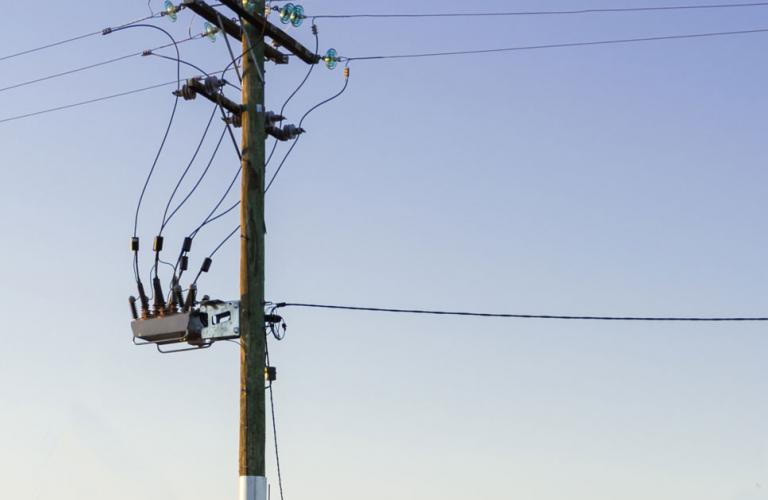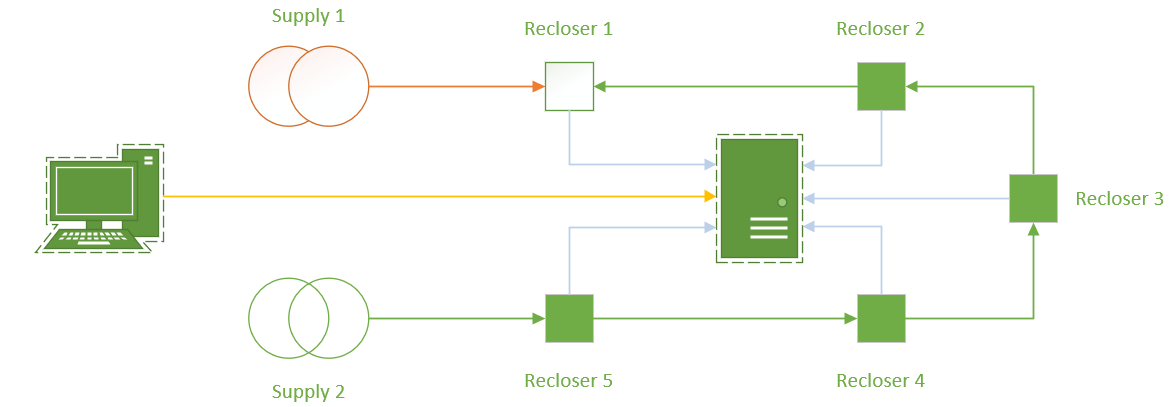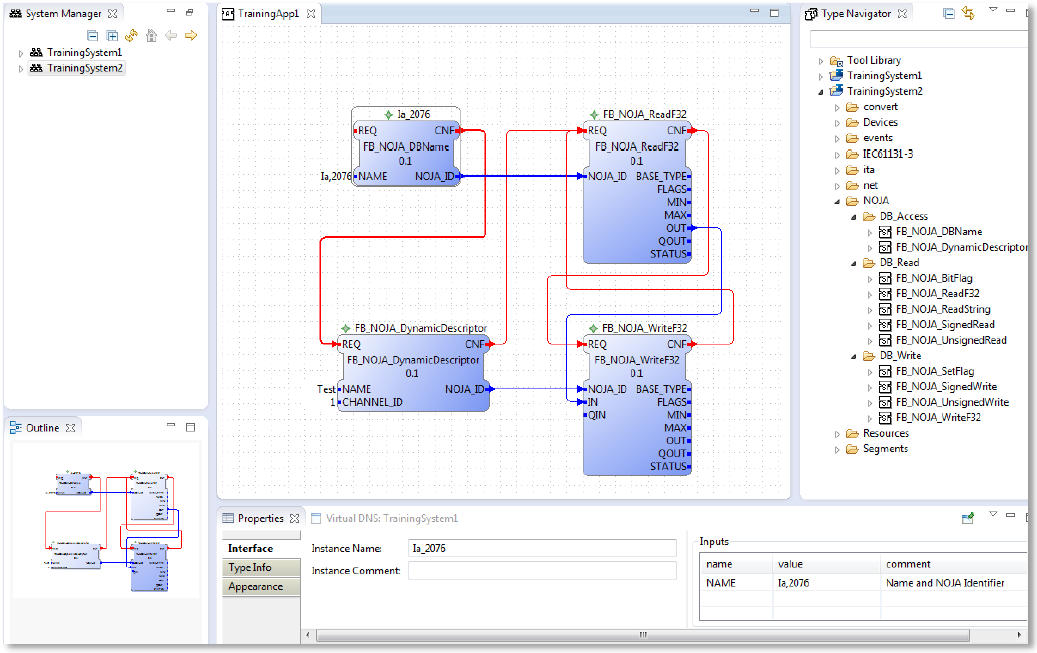#42 Marcela St., Damong Maliit, Brgy. Nagkaisang Nayon, Novaliches, Quezon City 1125, Metro Manila, Philippines

Ultimately, protection devices in the field will still have some local automation, such as Autoreclosing, but the key theme of centralised automation is to provide specific signals to a central control system to make the correct decisions for re-switching the grid in adverse conditions.

Figure 1 – Simplified Network Diagram of a Centralised Automation Scheme
The recurrent issue in rolling out these centralised schemes is the challenge of interoperability:
“Why does x vendor’s signal y work differently to z vendors signal y?”
When all signals that are provided to the centralised automation system should be consistent across brands, the minor esotericisms of each IED can cause headaches for Protection and Control Engineers.
NOJA Power’s solution to this challenge is to build a PLC logic engine standard into the OSM Recloser RC Control System – IEC 61499. Given its flexibility in automating networks, the functionality itself has inherited the designation “Smart Grid Automation (SGA) IEC61499”.
SGA is an event-controlled automation description platform, which uses function blocks to describe automation behaviour. Users can build their own applications in SGA, install them into a NOJA Power OSM Recloser to create new functionality. SGA has access to all signals and status in the NOJA Power Recloser, providing control engineers with the capability to edit, redesign or tweak functionality to suit the local automation requirements.
For Centralised automation schemes, this capability provides tremendous flexibility in implementing signals that leave the OSM Recloser destined for the utility control room. It also provides legacy compatibility, as signals can be edited to appear the same as other network legacy equipment, shedding the shackles of enslavement to the incumbent asset base of incompatible equipment.

Figure 2 – NOJA Power SGA IEC61499 Logic Engine UI
SGA does not have to be confined to combining and permutating signals for the purposes of automation – it could be used to develop automation algorithms itself.
Using IP communications, SGA Algorithms can be designed to publish and subscribe to information and event flow between devices compatible with the IEC 61499 standard, whether it is a series of NOJA Power OSM Reclosers, or a mix of connected PLC and Recloser devices.
Field examples of this functionality that we have witnessed thus far include:
“IEC61499 really puts the automation power into our utility customer engineers’ hands,” reports NOJA Power Group Managing Director Neil O’Sullivan. ”Rather than requiring manufacturers to hard code new functionality, our customers have the power and ability to create their own functionality and get the most out of the automation systems.”